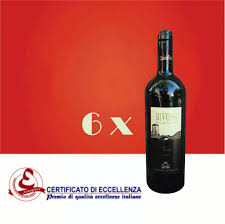Vino Bivongi doc
Buy: https://www.agroitalia.com/prodotto/vino-bivongi-doc/
Bivongi is a DOC of the Calabria wine region in the far south of Italy. It was introduced in June 1996, making it the youngest of the region’s DOC titles. Bivongi wines remain relatively unknown in the wine world outside Italy, although there are initiatives underway to bring them to a wider audience. The introduction of the DOC title was the first of these, but has not yet made a significant impact.
Bivongi
The coat of arms of Bivongi
The wines made under the Bivongi title come in red, white and rose (rosato) forms. The reds and roses account for the majority of production and are made from Gaglioppo, Greco Nero, Nocera and Calabrese (Nero d’Avola) grapes. Their white counterparts use the Greco Bianco, Malvasia Bianca and Ansonica varieties. The red (rosso) wines are sometimes made in a novello style, similar to that of Beaujolais Nouveau. To earn the title riserva, a Bivongi rosso must be at least two years old before commercial release, and have spent at least six months in barrel.
The wines are made from vineyards in the communes
The wines are made from vineyards in the communes of Bivongi, Caulonia, Monasterace, Riace and Stilo, all of which are in the Reggio Calabria province. The DOC catchment area also covers the Guardavalle commune just to the north, in the Catanzaro province. Geographically, this zone forms the ball of Italy’s ‘foot’ (although imaginative football fans might argue that privilege goes to Sicily). This is an area defined by coastal hills, the Catena delle Serre mountain chain and the rivers which snake between the ridges towards the Ionian Sea.
The quality viticulture
The vineyards responsible for Bivongi wines are found on the eastern side of these hills, mostly among the lower slopes and within a few miles of the sea. The proximity of the Mediterranean is important to the terroir, as it helps to moderate the intense heat of the south Italian summer. The name Il Mezzogiorno, meaning ‘The Midday’, is often applied to Italy’s southern half in reference to this heat. The cooling and heating of the land over the course of a summer day causes morning and afternoon breezes, which minimize the risk of fungal vine diseases and further improve the climate’s suitability for quality viticulture.

